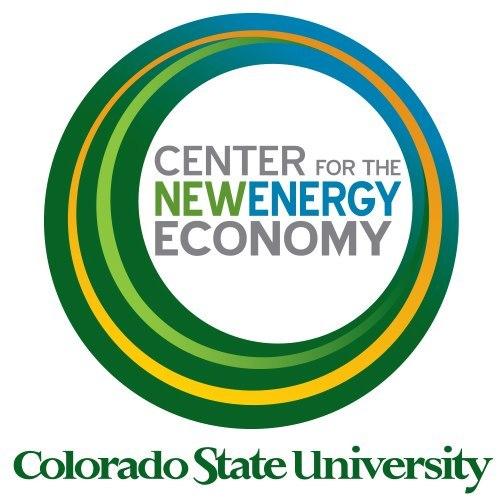
About 80 percent of energy regulation goes on at the state level, estimates Jeff Lyng, senior policy analyst at the Center for the New Energy Economy in Denver. But until last year, finding out exactly what states were doing was incredibly labor intensive: One had to go to each individual state government website separately.
Last year, however, the center unveiled the Advanced Energy Legislation Tracker – a simple, comprehensive, easy-on-the-eyes database of state-level public policy from across the nation. You can check the status of PACE in Arkansas, feed-in tariffs in Hawaii, or gas-tax replacements anywhere: free and searchable. (The kind of thing that the American Legislative Exchange Council has had for a while.)
“Most of the energy business is regulated at the state level. And states are leading. The mission of this center is to work with states,” said Lyng. (CNEE is a part of Colorado State University, with former Colorado Gov. Bill Ritter as its director.)
Energy is a hot topic now, judging from the volume of legislation being proposed: 489 policies were enacted last year and 713 the year before (the drop-off due to the state legislatures that hold abbreviated sessions in even years.)
Last month, the CNEE released its 2014 year-end report of state energy policy, covering the main policy categories (both for and against):
Regulatory – 88 bills were enacted in 2014. (This includes all public-utility commission governance.)
Financing and financial incentives – 63 bills, about half of which were tax credits, with 14 bills providing loans and other financing mechanisms for upfront costs – something CNEE would like to see grow.
Infrastructure – 52 bills (including smartgrid innovation in Hawaii and Massachusetts).
Electricity generation – 48 bills (This category included Power Purchase Agreements, waste-to-energy, and net metering.)
Transportation – 43 bills. This included initiatives to help replace gas-tax revenue lost with the assumption.
Economic development – 40 bills. Many of these are workforce development initiatives -- and lots of research and development. "States are competing against each other" in this, said Lyng.
Natural gas development - 38 bills. The most common were laws clarifying and redefining split estate (9 bills).
Emissions – 35 bills. These included 5 greenhouse gas reduction-related bills, and 11 were state responses to federal standard changes.
Energy efficiency – 23 bills. Although it's the least-costly, EE had the smallest number of attempts.
It would be impossible to cover more than an overview here, but I really encourage you to check out the trends on the Tracker -- CNEE does really get into depth. The 2014 report points to a couple of states for points of progress:
Notable advanced energy-related legislation was enacted by multiple states, including California (AB 2188), Hawaii (SB 632), Nevada, Maine (SP 644), Minnesota (HF 2834), and Rhode Island (HB 7727, HB 7991), each of which are discussed in this report. In particular, South Carolina (SB 1189) became the latest state to enact an RPS, focused on distributed generation.
From a renewables perspective, CNEE’s 2014 report shows great news about renewable portfolio standards: Once passed, they have staying power. Attempts to roll back renewables standards failed every time in 2013, although in 2014 there were two decreases/rollbacks (Ohio and Wisconsin).
“In states where there is legislative interest in rolling an RPS back, those states are already seeing the benefits,” said Lyng. “These policies have sustained companies and local industry, and it's hard to say no to that.”
The Tracker was built off an API from the Sunlight Foundation’s OpenStates project, and it automatically searches for anything energy-related and updates in real time. CNEE also offers a weekly policy podcast with state-specific and national information. They are uploading interviews with deep dives into some of the trends.
The question: Is a renewable-energy version of ALEC’s “model legislation” program next?
Image credit: Center for the New Energy Economy
Hannah Miller is a writer, ecologist, and adventurer living in Colorado. She is interested in everything, but particularly in creative sustainability practices, the Internet, arts and culture, the human-machine interaction, and democracy. She's lived in Shanghai, New York, L.A., Philadelphia, and D.C., and taught English, run political campaigns, waited tables, and written puppet shows. She definitely wants to hear what you're up to. You can reach her at @hannahmiller215, email at golden.notebook at gmail.com or at her site: www.hannahmiller.net.














